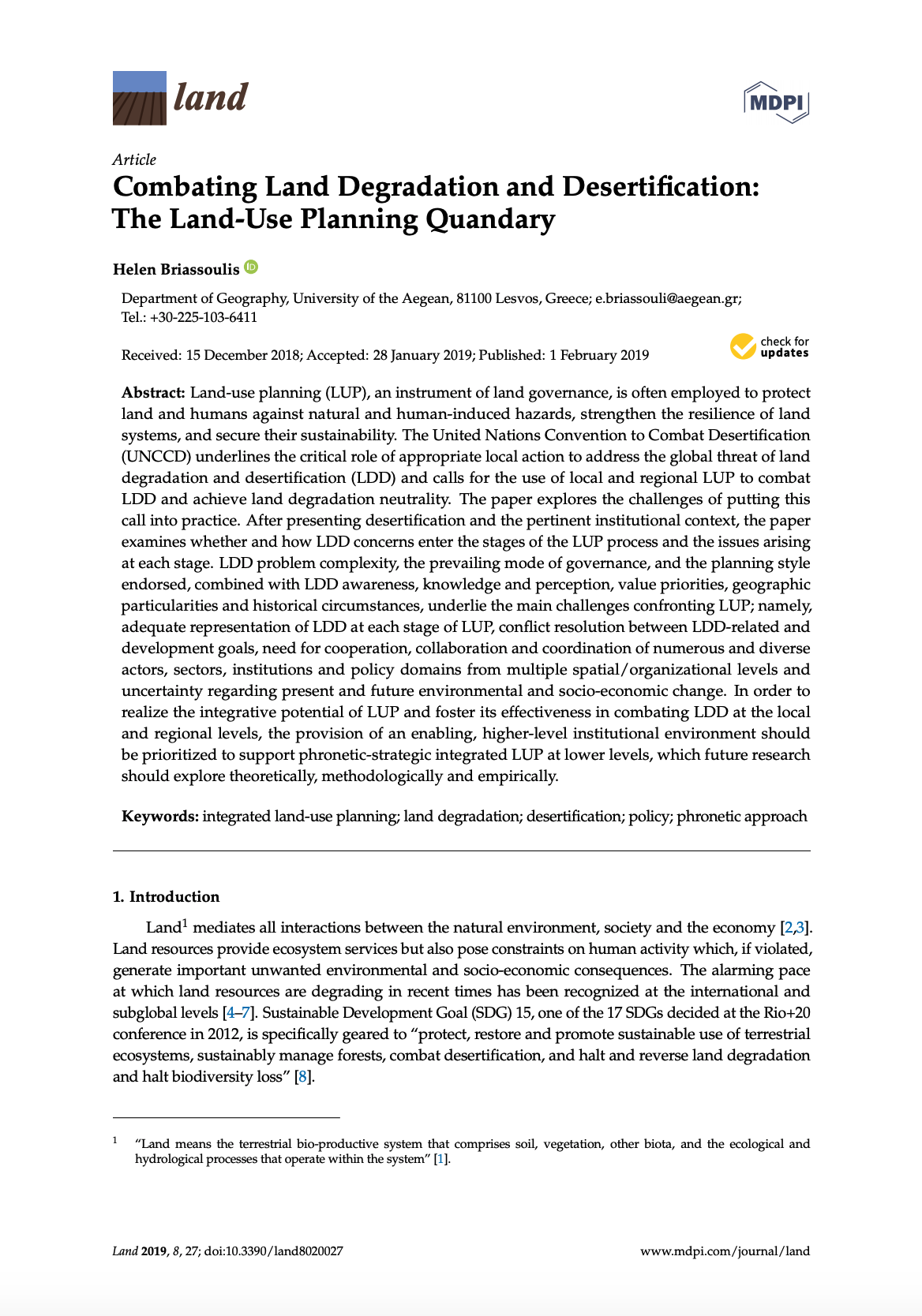Resources
Displaying 1786 - 1790 of 2258Combating Land Degradation and Desertification: The Land-Use Planning Quandary
Land-use planning (LUP), an instrument of land governance, is often employed to protect land and humans against natural and human-induced hazards, strengthen the resilience of land systems, and secure their sustainability. The United Nations Convention to Combat Desertification (UNCCD) underlines the critical role of appropriate local action to address the global threat of land degradation and desertification (LDD) and calls for the use of local and regional LUP to combat LDD and achieve land degradation neutrality. The paper explores the challenges of putting this call into practice.
Land Governance in Post-Conflict Settings: Interrogating Decision-Making by International Actors
Humanitarian and development organizations working in conflict-affected settings have a particular responsibility to do no harm and contribute to the wellbeing of the population without bias. The highly complex, politicized realities of work in conflict- and post-conflict settings often require quick, pragmatic and results-oriented decisions, the foundations of which remain frequently implicit. Such decisions might follow an intrinsic logic or situational pragmatism rather than intensive deliberation.
Variable Forest Structure and Fire Reconstructed Across Historical Ponderosa Pine and Mixed Conifer Landscapes of the San Juan Mountains, Colorado
Late-1800s land surveys were used to reconstruct historical forest structure and fire over more than 235,000 ha in ponderosa pine and mixed conifer landscapes of the San Juan Mountains, Colorado, to further understand differences among regional mountain ranges and help guide landscape-scale restoration and management. Historically, fire-resistant ponderosa pine forests with low tree density and relatively frequent fire, the most restorable forests, covered only the lower 15%–24% of the study area. The other 76%–85% had dominance by mixed- to high-severity fires.
Contrasting the Effect of Forest Landscape Condition to the Resilience of Species Diversity in a Human Modified Landscape: Implications for the Conservation of Tree Species
Using landscape moderation insurance and Intermediate Disturbance Hypothesis (IDH) as frameworks, this study assessed the response of local assemblage among different land use regimes (mean β-diversity), using the Jaccard dissimilarity matrix in contrasting Human Modified Forest Landscapes (HMFLs). The study was conducted at the relatively simplified Mafhela Forest Reserve and the complex Thathe Vondo Forest Reserve in South Africa. The patterns of overall β-diversity between HMFL and State-protected Indigenous Forests (SIF) were compared and the leading change drivers were then untangled.
Outmigration and Land-Use Change: A Case Study from the Middle Hills of Nepal
Outmigration has become a key livelihood strategy for an increasing number of rural households, which in turn has a profound effect on land management. Studies to date have mainly focused on migrant households, and there is limited literature on the differences in land management practices of migrant and nonmigrant households. This article drew on a current study to explore how outmigration affects land management practices in the context of rapidly changing rural communities and economics in the middle hills of Nepal.




